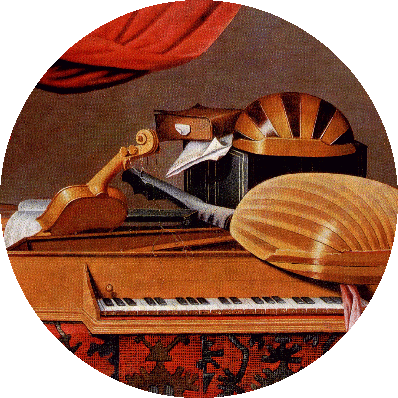 |
|---|
 |
|---|
Enrico ALBICASTRO
also known as
Heinrich Weissenburg von BISWANG
A well-to-do and talented violinist and composer, Heinrich Weissenburg von Biswang was born in Switzerland. Translating his family name into Italian (Weissen burg = White Fortress = Albi castro) he set out on a career in the Low Countries as one of the itinerant oltremontani who fed the busy Amsterdam presses of Roger and Witvogel in between a Concert schedule relatively as demanding as those known to virtuosi of our own time.
On leaving his ancestral home in the Simmental, Albicastro studied for a while at the University of Leyden, the registers showing both forms of his name as well as indicating his two major interests at that time - music and the military. He is known to have served as a cavalry officer in the Wars of the Spanish Succession; and although (like Albinoni) he styled himself a dilettante on the title pages of some of his works, there is no evidence that musical composition was a mere pastime. Indeed the seriousness of his studies emerges with insistent clarity in his chamber music, which comprised books of Solo Sonatas and of Trio Sonatas, as well as in his solitary orchestral work, the Concertos of Op. 7. As a performer, he must have possessed an unusually good technique, for the Sonatas for Violin and Continuo make abundant use of multiple-stopping, arpeggio passages, and complex bowings, while the Concertos contain numerous examples of exceptionally tricky and brilliant figurations for the first violins. As a contrapuntalist, his allegiance leans more toward the German than to the classical Italian school of Corelli and Torelli, and it is significant that Quantz greatly prized his music (together with that of Biber and Walther) in the early and formative part of his career. Albicastro's harmony has been compared for its unusual richness and bold progressions to the Organ Fantasias of Bach, and it is possible that the keyboard played as important a part as the violin in the early shaping of these Concertos, which were published in the customary set of twelve by Roger of Amsterdam about the year 1703. They are not Concerti Grossi, but rather Orchestral Concertos in which dynamic and other contrasts are achieved by means of controlled tone and tempo instead of the deliberate inequality of concertino and tutti. Their basic four-movement plan is characterized by a composite opening movement designed to introduce or alternate powerful and self-contained musical ideas. Thus the Concerto in B flat twice juxtaposes a series of solemn chords and a brief but dashing Allegro before finally moving on to a majestic Grave in triple time, full of striking harmonic colors and aggressive bass trills. The corresponding movement of the b-minor Concerto begins with a splendidly rhetorical rising phrase in the basses, but soon relaxes into a chromatic vein which is echoed (after a short Allegro) in the closing Spirituoso section.
|